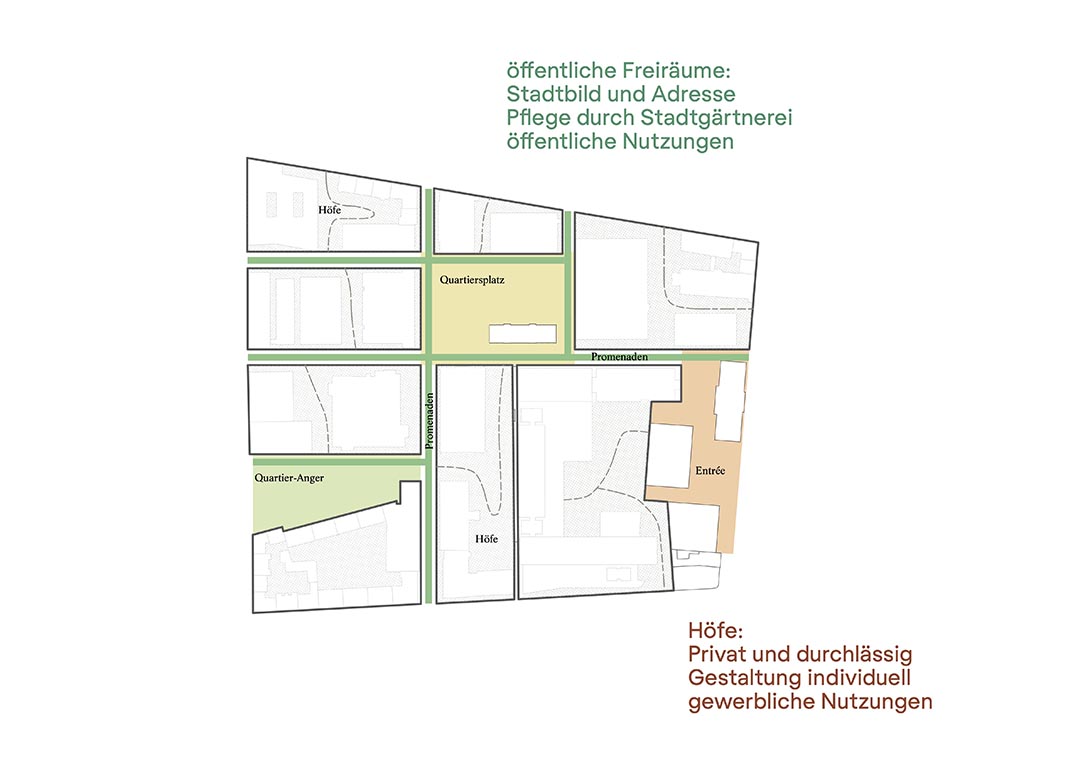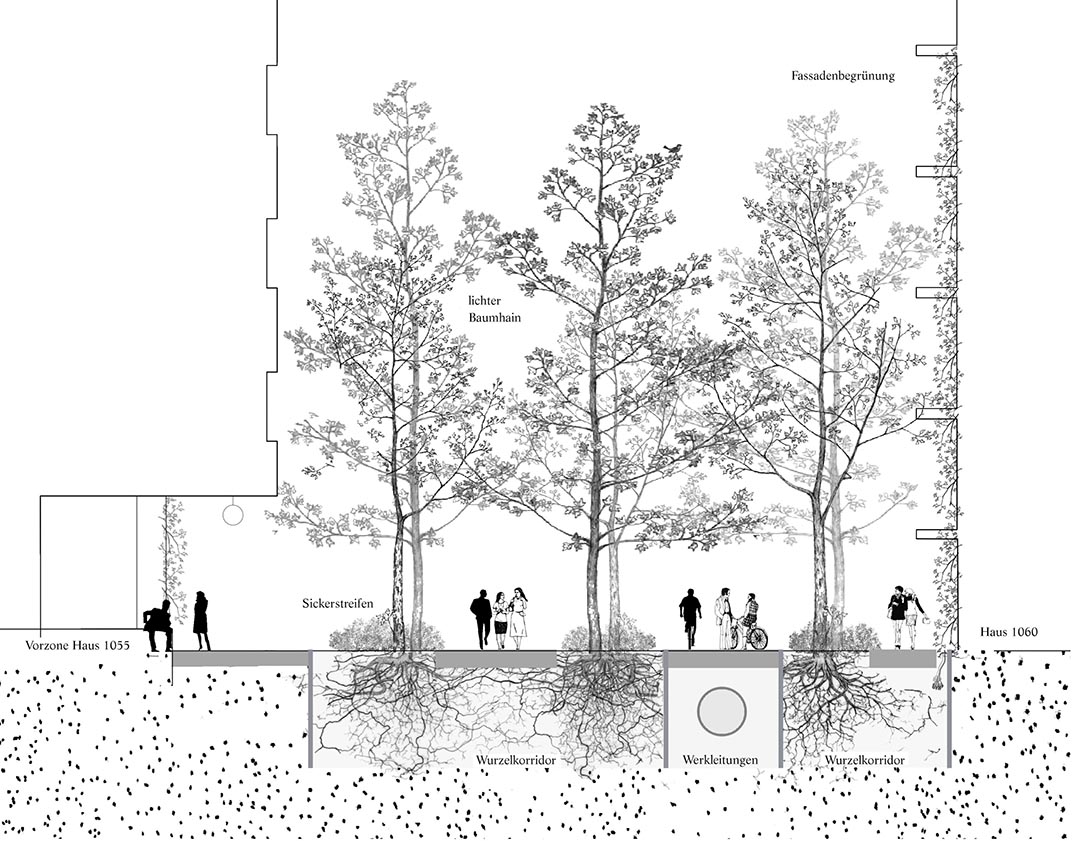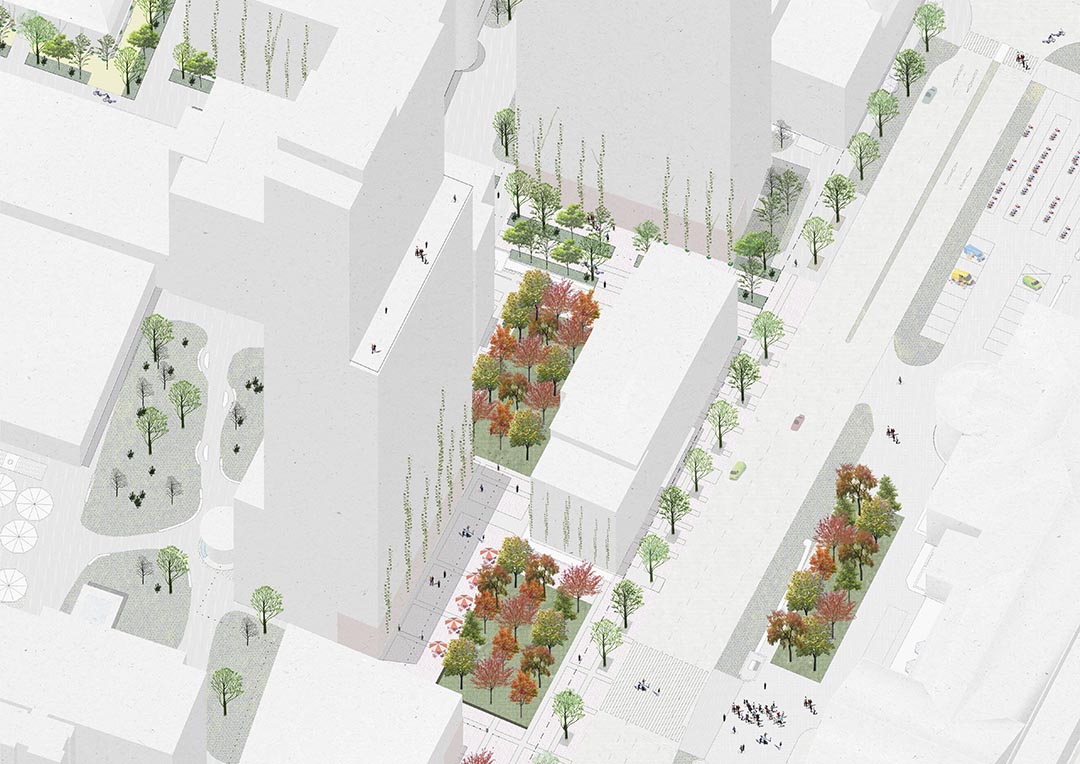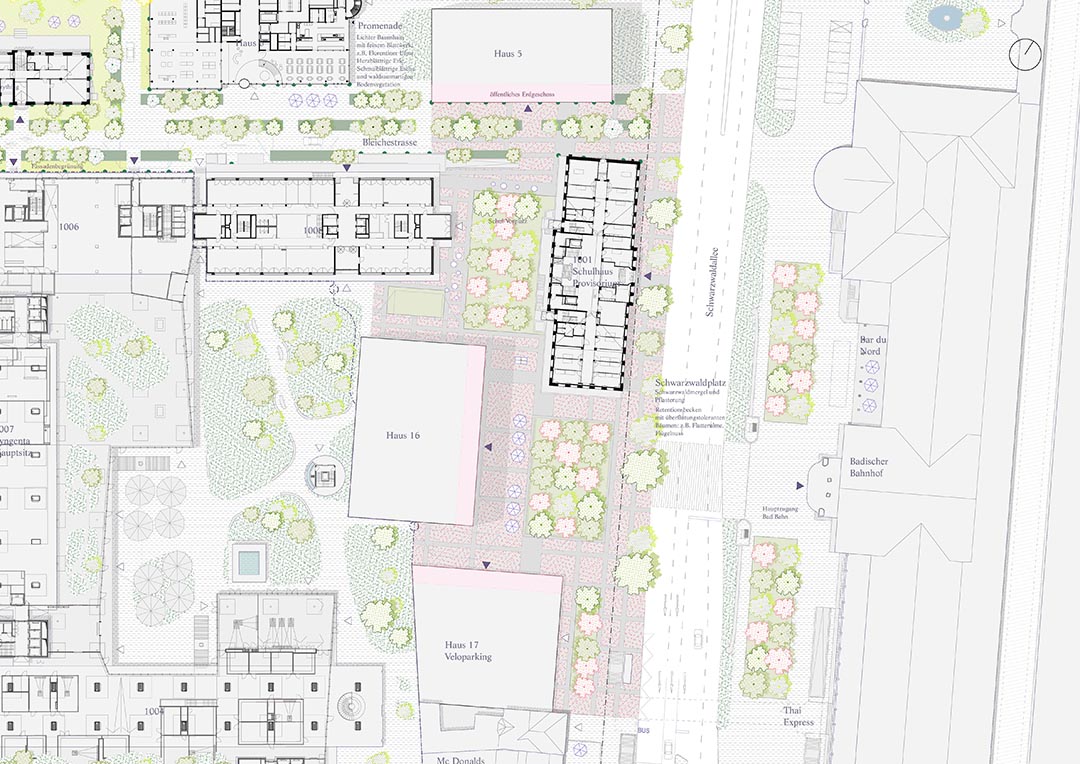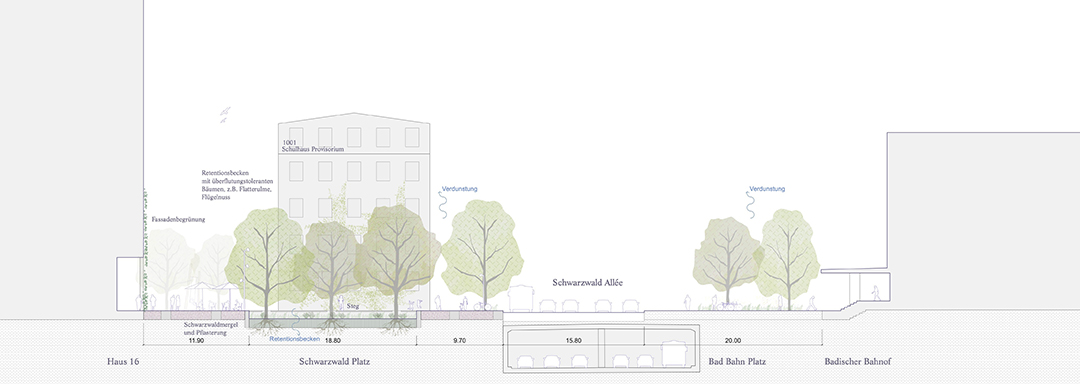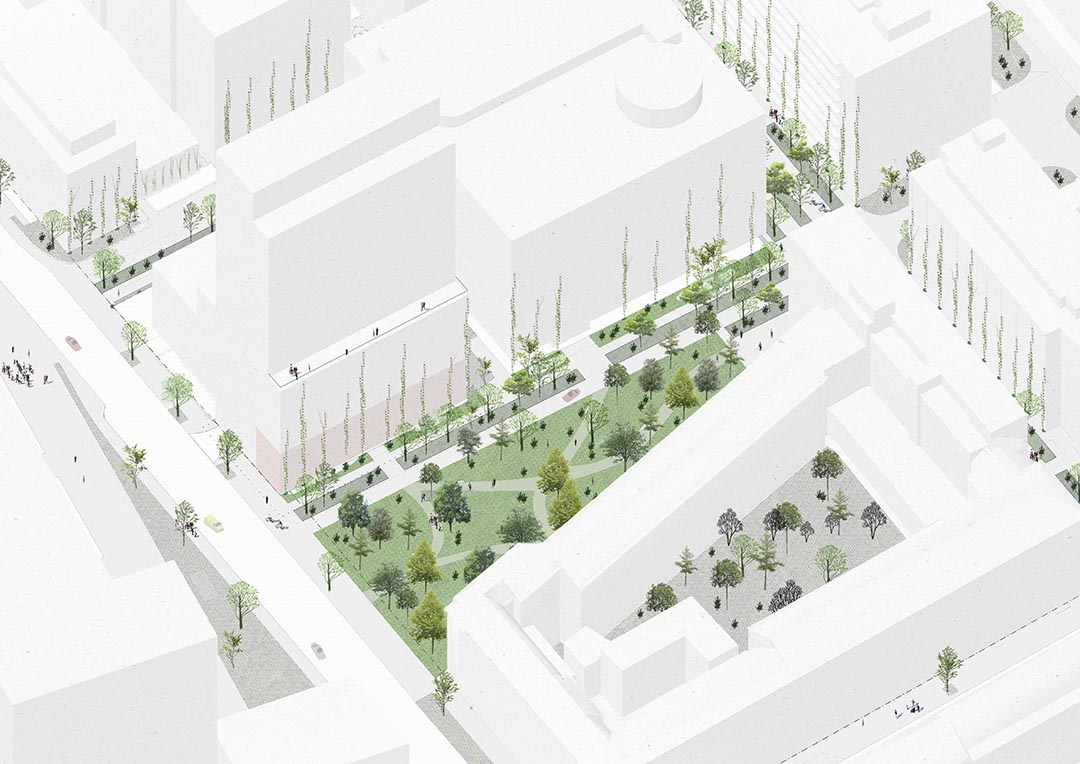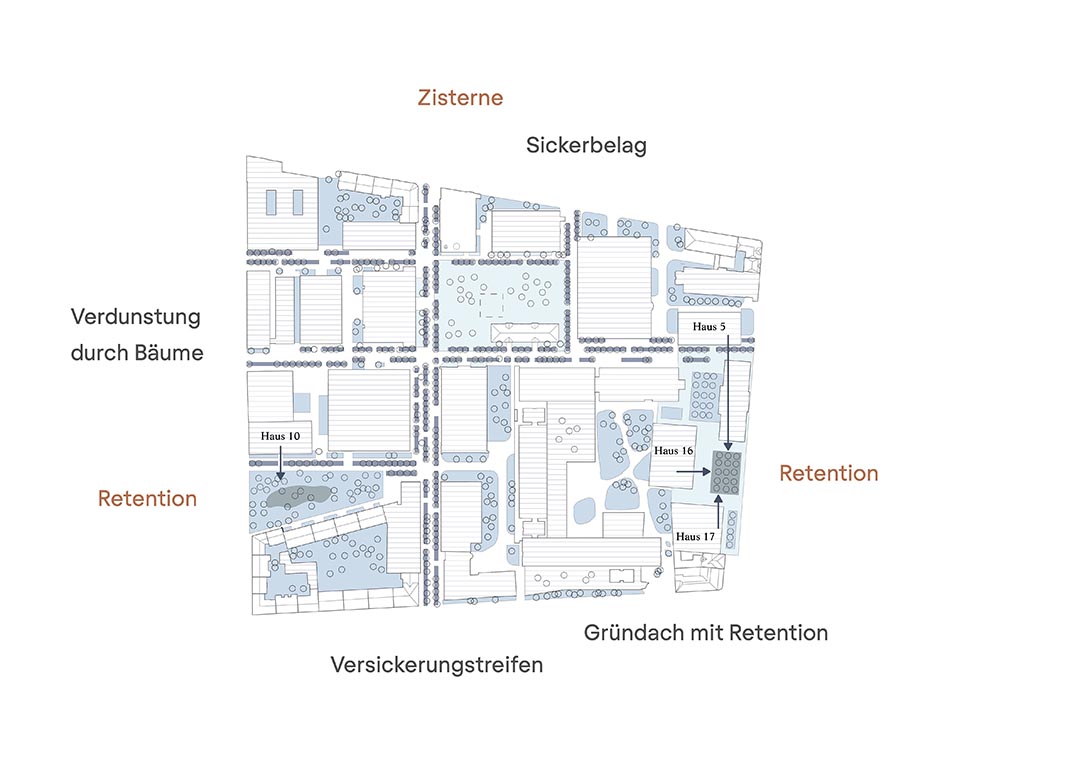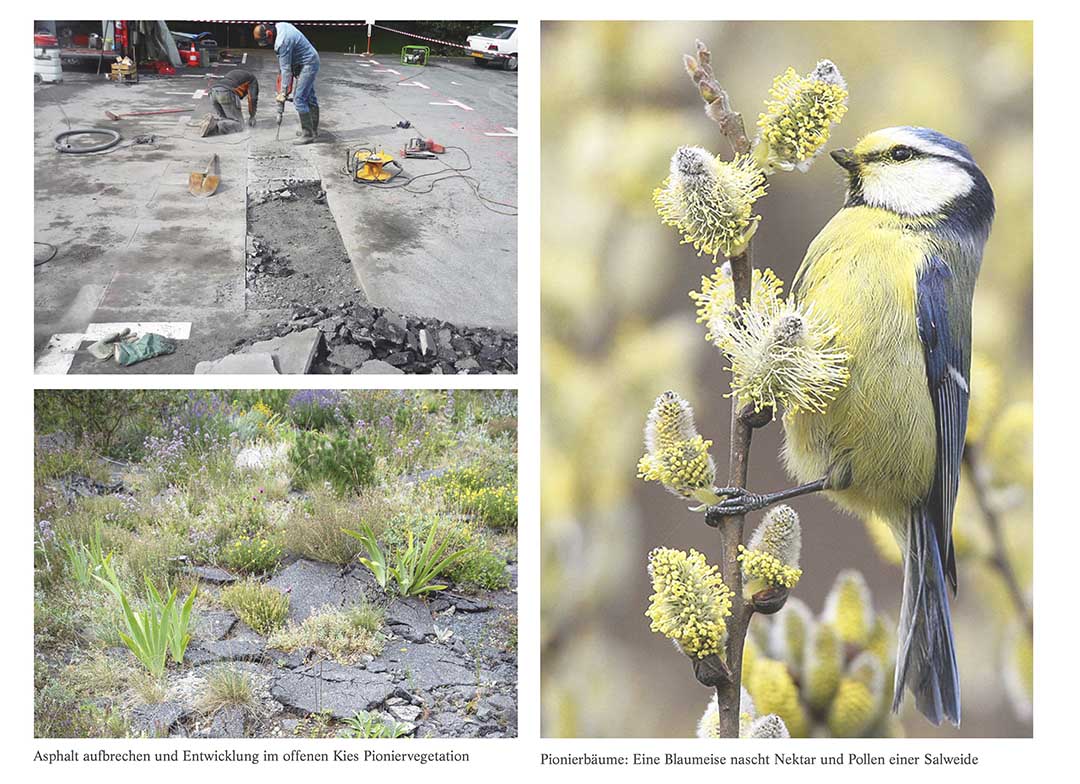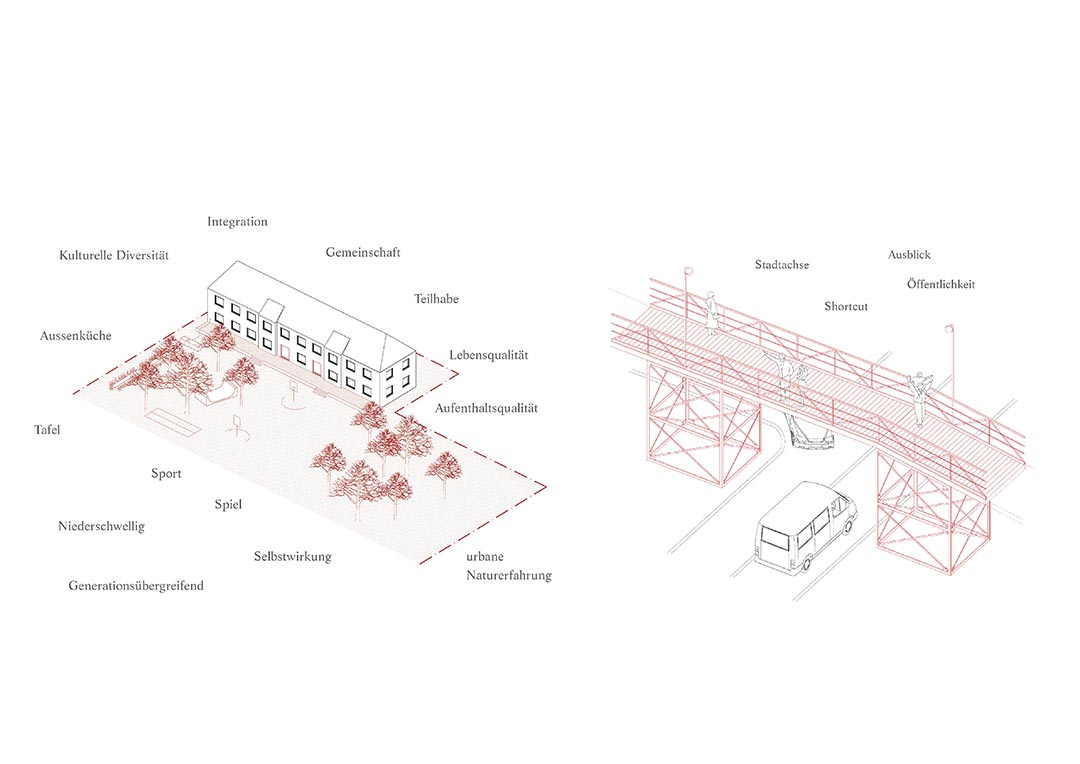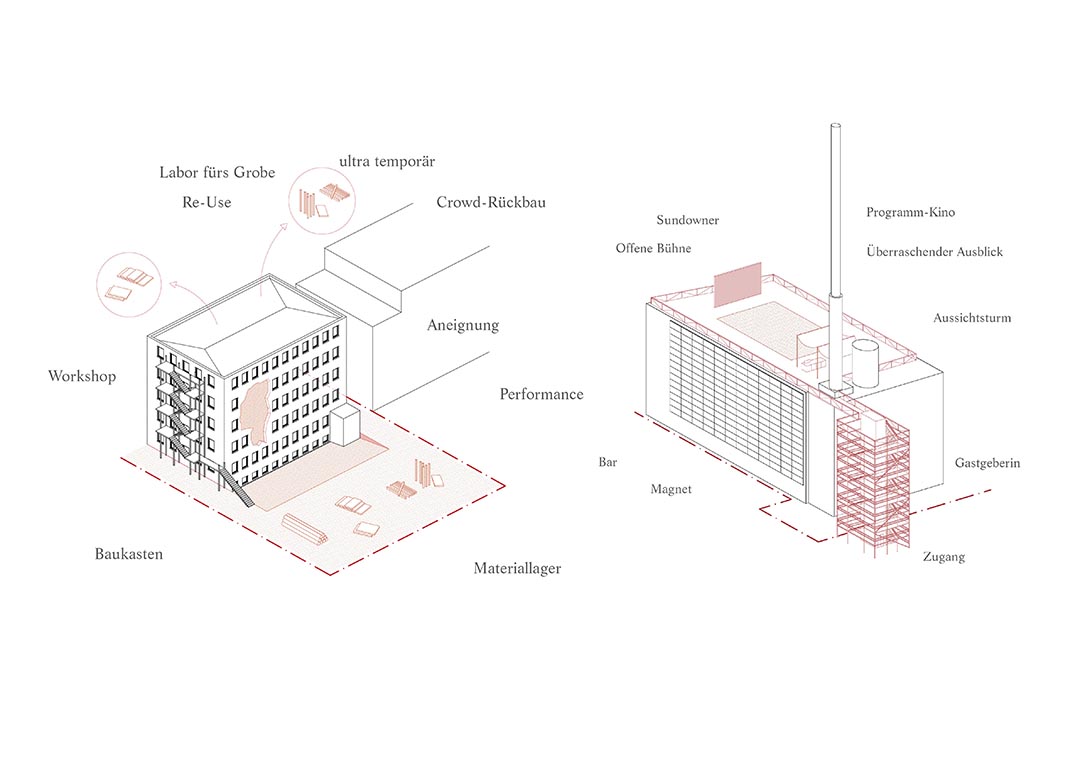Rosental Mitte
The proposal “Singing Spring” guides the transformation process over the next decade of Rosental Mitte site in Basel. It consists of a concept scheme securing the qualities of the newly created open space and a set of activating measures involving vegetative and human pioneers.
| Location | Basel, Switzerland |
| Size | 9 ha |
| Time Frame | 2024 - 2034 |
| Client | Immobilien Basel-Stadt |
| Commission Type | Invited competition first prize 2024 |
| Project Team | Urbanism: Weyell Zipse, Ecology: Martin Frei, Cultural Management: Knopp + Kniel |
ENG Rosental Mitte is an off-limits 9 ha site located centrally in Basel, between the Messeplatz trade fair square and the German station of Badischer Bahnhof. This industrial site was originally developed by the Geigy firm. It is there that the infamous insecticide DDT was invented in 1939, whose wide use led to the publication of the book “Silent Spring” by Rachel Carson, which revealed the devastating damage of the chemical on the environment. The canton of Basel-Stadt acquired in 2019 the Rosental Mitte site with the aim to open it up and make it part of the urban fabric. It subsequently launched a competition to define the qualities of the newly reclaimed open spaces and provide a set of activating measures to guide the progressive opening of the site during the next decade. Our winning scheme “Singing Spring” is based on the creation of a network of promenades serving as a backbone for the constitution of three new open spaces: a neighbourhood park, the Riehenteichanlage, a central square, the Rosentalplatz, and an entrance plaza located in front of the German station of the Badischer Bahnhof, the Schwarzwaldplatz. The project aims at providing an added environmental value through the development of an overall ecological network. A set of activating measures includes the use of humans and vegetative pioneers to build a temporary bridge, break the existing asphalt and planting pioneer trees.
DE Rosental Mitte ist ein 9 ha grosses Areal in Basel, zentral gelegt zwischen dem Messeplatz und dem Badischen Bahnhof. Dieser Industriestandort wurde ursprünglich von der Firma Geigy entwickelt. Dort wurde 1939 das berüchtigte Insektizid DDT erfunden, dessen weite Verbreitung zur Veröffentlichung des Buches „Silent Spring“ von Rachel Carson führte, das die verheerenden Schäden der Chemikalie an der Umwelt beschrieb. Die Freiräume bilden das Herz und das Adersystem vom Siegerprojekt «Singing Spring»: Hier bewegt man sich, hier begegnet man sich, hier entstehen inmitten der grossmassstäblichen Bebauung Zusammengehörigkeitsgefühl und Anknüpfungspunkte an die Nachbarquartiere. Prägend für die Quartieridentität ist aber vor allem der öffentliche Raum, der aus in vier differenzierten Typologien besteht: Der Erschliessung aus baumbestandenen Promenaden, dem Schwarzwaldplatz als repräsentativem Quartierentrée, dem Rosentalplatz als Quartierplatz und der Riehenteichanlage als “Quartier-Anger” für die Anwohnerschaft. Die aktivierenden Massnahmen umfassen einerseits den partizipativen Prozess und die Zwischennutzungen, um Leute aus der Nachbarschaft in das sich öffnende Quartier zu locken. Erste vegetative Massnahmen sind bereits zu Beginn der Transformation im gesamten Areal vorgesehen: Wo immer möglich, werden bereits Asphaltflächen aufgebrochen. Wo es die Nutzung gestattet, ist im offenen Kies Pioniervegetation willkommen. Eine weitere wichtige Massnahme ist die temporäre Fussgängerpasserelle. Sie macht die Sandgrubenstrasse über den unzugänglichen Geländeteil hinweg zumindest für Fussgänger durchgängig – und etabliert diese wichtige Langsamverkehrsachse so bereits lange vor der Öffnung des Areals.
Team SCB: Céline Baumann, Juan Brunetti, Diogo Faria


